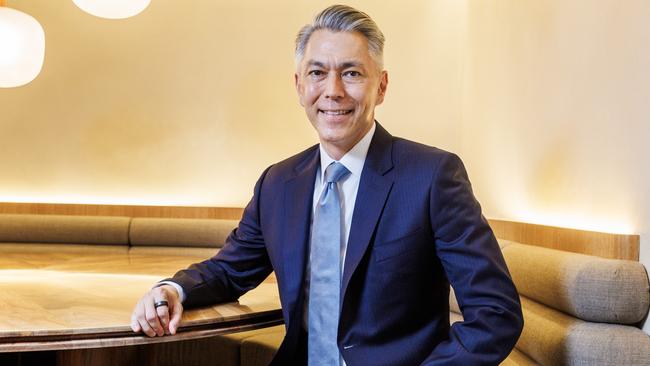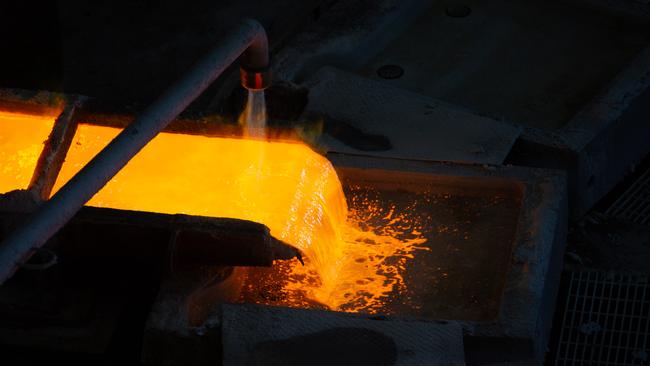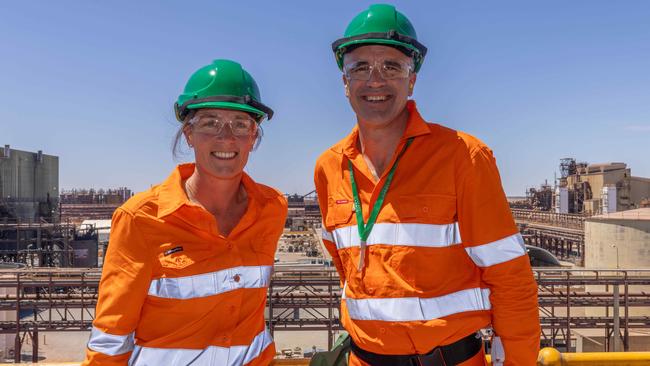Copper boom driving BHP’s expansion plans in far north SA
Global demand for copper could drive a rush for SA’s buried treasure – but operating costs and productivity are crucial to the expansion plan.

SA News
Don't miss out on the headlines from SA News. Followed categories will be added to My News.
Resources giant BHP is insisting operating costs and productivity will be crucial in deciding a multi-billion dollar expansion plan in SA’s far north, aimed at fuelling an extraordinary global demand for copper.
An estimated $150bn investment worldwide is needed to scale up production of up to 140 new copper mines by 2030 alone, a BHP report finds.
This unprecedented upsurge in production of copper, a highly efficient conduit for electricity generation, transmission and storage, would support the rapid and widespread deployment of clean energy technologies like renewable energy, nuclear power, battery storage and electric vehicles.
A deposit at Oak Dam is touted as a game-changer in BHP’s plans to create an SA copper province, centred on the flagship Olympic Dam mine.
But BHP chief executive officer Mike Henry has declared the copper business relies on driving high levels of competitiveness and productivity, saying capital and ongoing operating costs will be closely examined ahead of the expansion decision.

Mr Henry says “a wonderful opportunity” lies ahead in SA copper and praises the SA government for being “very constructive with business” to work together to “find out how we can unlock opportunities”.
“In the case of South Australian copper, we’re looking at the potential to expand to over 500,000 tonnes per annum of copper production there now that we’ve consolidated the broader basin,” Mr Henry said, when delivering half-year results on February 20.
“But we’re still working the numbers, and as I said in respect of nickel, copper is something that’s even more reliant upon competitiveness or being able to drive high levels of productivity than perhaps some other export businesses are here.
“And as we work these numbers, of course, one of the things that we’ll be looking at is the underlying cost base, both in terms of capital and in terms of ongoing operating costs.”
Mr Henry last June in Adelaide branded same job, same pay labour hire laws a “productivity killer” that would cost BHP $1.5bn a year and create an economic drag on the nation.
In a veiled reference to these new laws, Mr Henry said recent changes affected BHP’s operating costs “not in a good way”.
“But, as to whether the numbers still come together in a way that supports attractive enough returns for us (in SA) when compared against the opportunities we have in Canada or Chile or elsewhere, time will tell, it is still a work in process,” Mr Henry said.
“We remain hopeful and, like I said, we’re working quite constructively with the state government as well.”

BHP wants huge amounts of water to enable an Olympic Dam copper smelter upgrade, potentially tripling the current capacity from 0.5 megatonnes to 1.7 megatonnes.
This could be supplied by the Northern Water project, a 600km pipeline from a 260 megalitre per day desalination plant on Eyre Peninsula, near Tumby Bay, for which BHP and the state government are co-funding feasibility studies.
The BHP-backed report released last November, called Rebuilding Australia’s Competitiveness, finds the Gawler Craton region, including Olympic Dam, contains up to $24bn of copper, gold, silver and iron ore deposits.
The report says a clean energy transformation would be possible only through the scaling up of mineral production – with estimates suggesting up to 140 new copper mines, 60 new nickel mines, 50 new lithium mines and 17 new cobalt mines will be needed by 2030 alone.
Visiting Oak Dam on February 26, Premier Peter Malinauskas forecast the proposed expansion would create thousands upon thousands of new jobs.

Mr Malinauskas said the Northern Water desal plant and 600km pipeline could start supplying water by 2028 to drive the potential tripling of BHP’s copper smelter.
“What the world looks like if we achieve all those things is thousands upon thousands of more jobs,” he said.
“What we see is royalties, the revenue coming into the state government. But also, more importantly, a lift in the prosperity of our state more broadly, which is good for families.”
Asked then if BHP’s expansion plans could continue without Northern Water, BHP Copper South Australia asset president Anna Wiley said the project had been split into two phases to dramatically reduce reliance on taking water from the Great Artesian Basin.
“But it is incredibly important that we deliver both stage one – to support our existing operations – and stage two, to support our growth activities,” she said.
More Coverage
Originally published as Copper boom driving BHP’s expansion plans in far north SA





